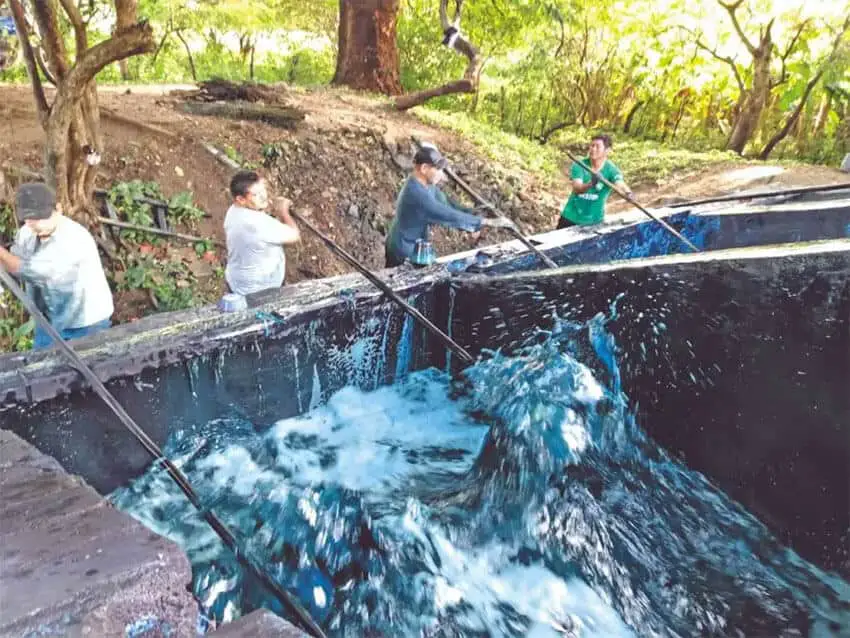Oaxaca indigo producers are hoping that recent interest from German and North American investors could be the beginning of a revival for the ancestral crop.
A German company reached out to Santiago Niltepec, a small town in the Isthmus of Tehuantepec, in search of an organic dye for its fabrics and garments. Indigo has been produced in the region’s indigenous Zapotec towns since the 18th century, the newspaper Milenio reported.
But the pandemic hit the clothing industry hard and cultivators of the crop struggled as prices dived, said Advir Vásquez Fuentes, a spokesperson for the indigo producers.
Now, the area’s fortunes appear to be changing. Vásquez said the investors approached municipal authorities for 500 kilograms of indigo for textile companies in Germany and confirmed that the producers were also in conversations with a North American company. While those negotiations are carried out, the state government has helped organize the distribution of the dye to local artisans.
Vásquez added that there were more than 100 hectares of land planted with jiquilite seeds in Santiago Niltepec ready to produce the organic ink, which producers hope will create more than 1,000 kilos of organic indigo and generate profits of more than 300,000 pesos (US $14,700). The first indigo plants should be ready before April.

The process to produce the dye is not simple, Vásquez explained. Once the seed is planted, it takes 100 days for the plant to reach maturity. If a young indigo plant is harvested too soon, it is useless. Dye producers cut up the mature plant, place it in giant tubs of water and then can begin extracting the first “curds” of unrefined dye. The traditional labor-intensive process makes for “unrivaled” quality, Vásquez said.
The natural dye is used in the design industry to give color to threads, silk, wool, embroidery or denim jeans. A kilogram of organic indigo can dye more than 10 kilograms of wool or cotton.
With reports from Milenio
